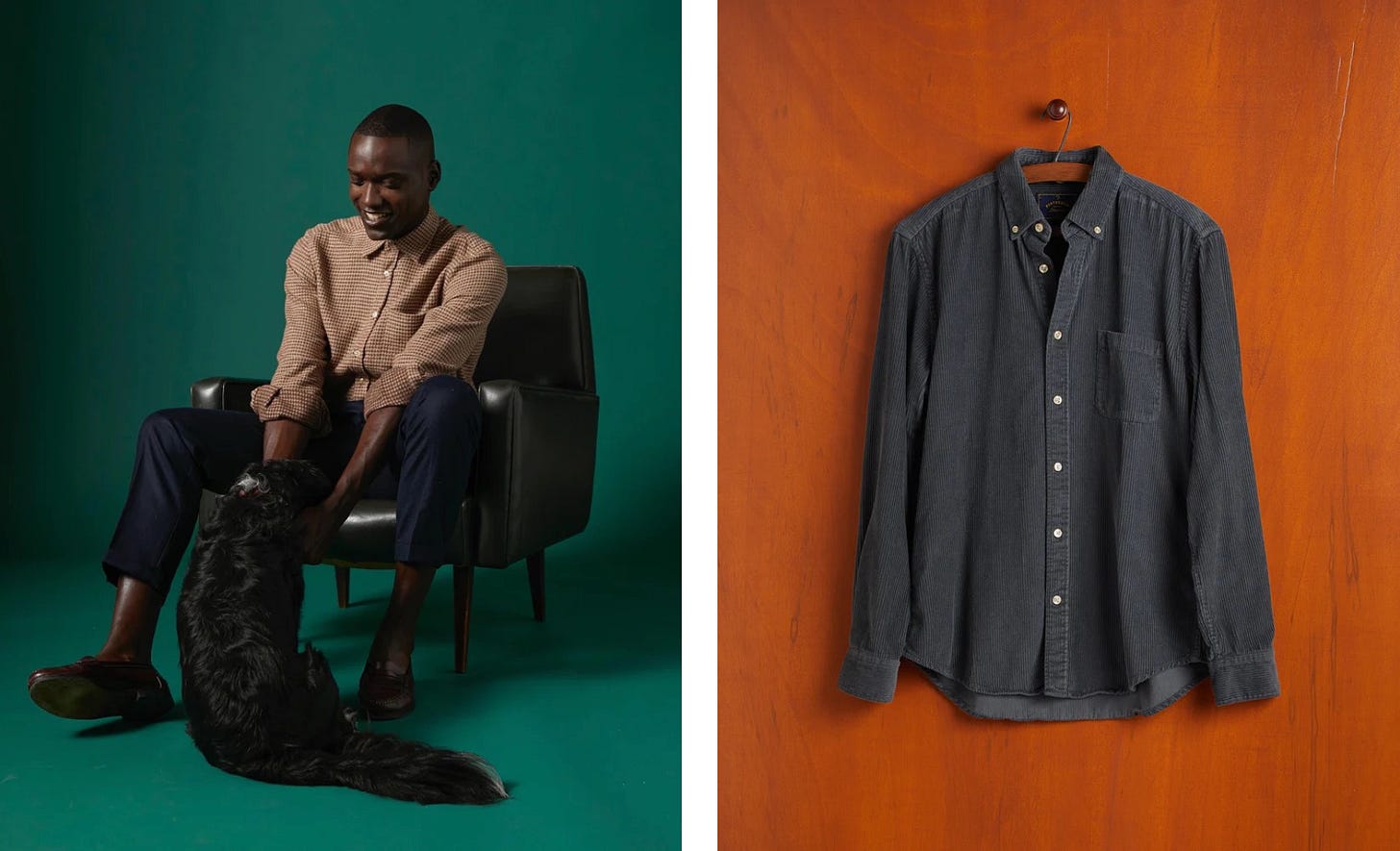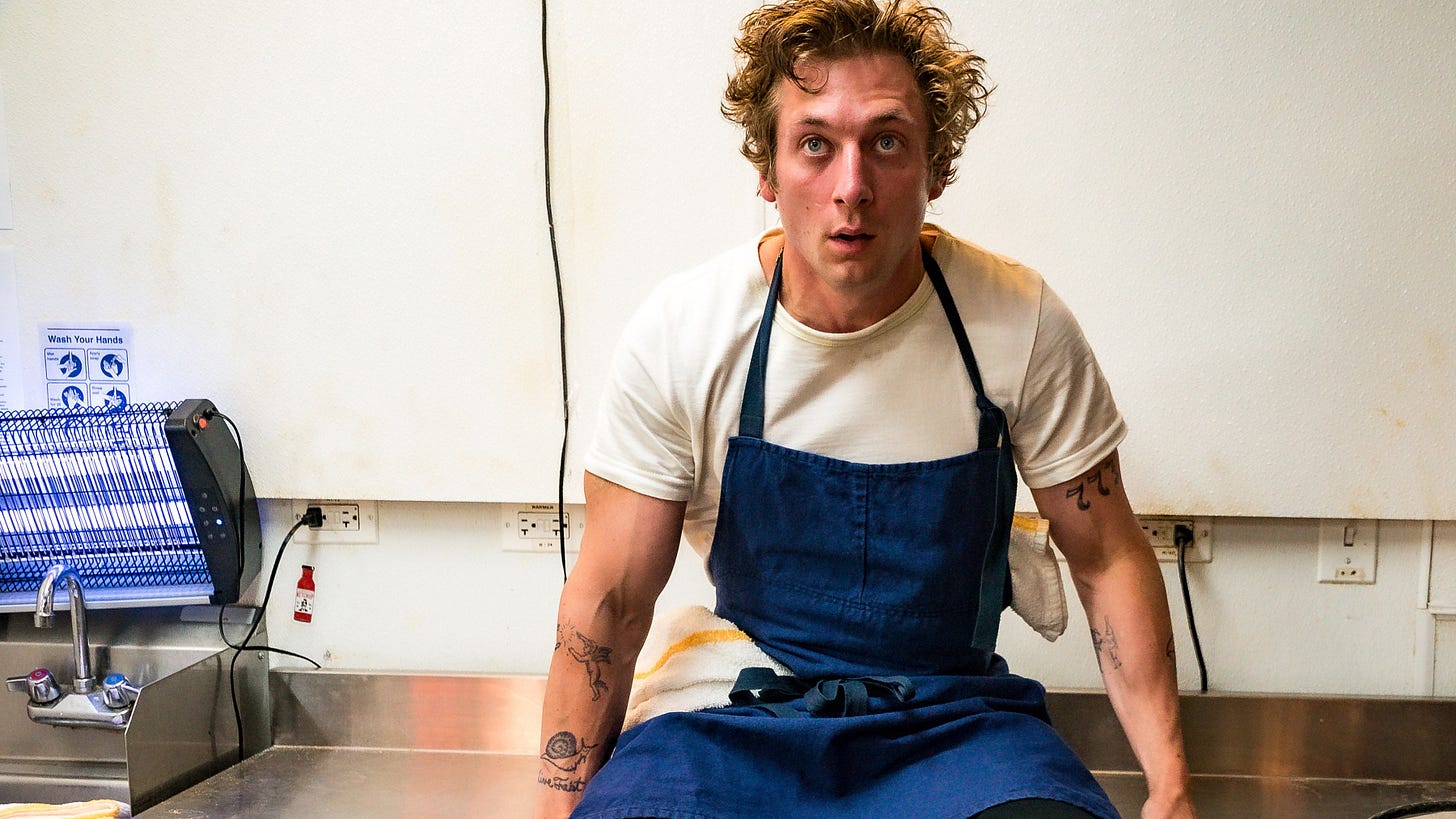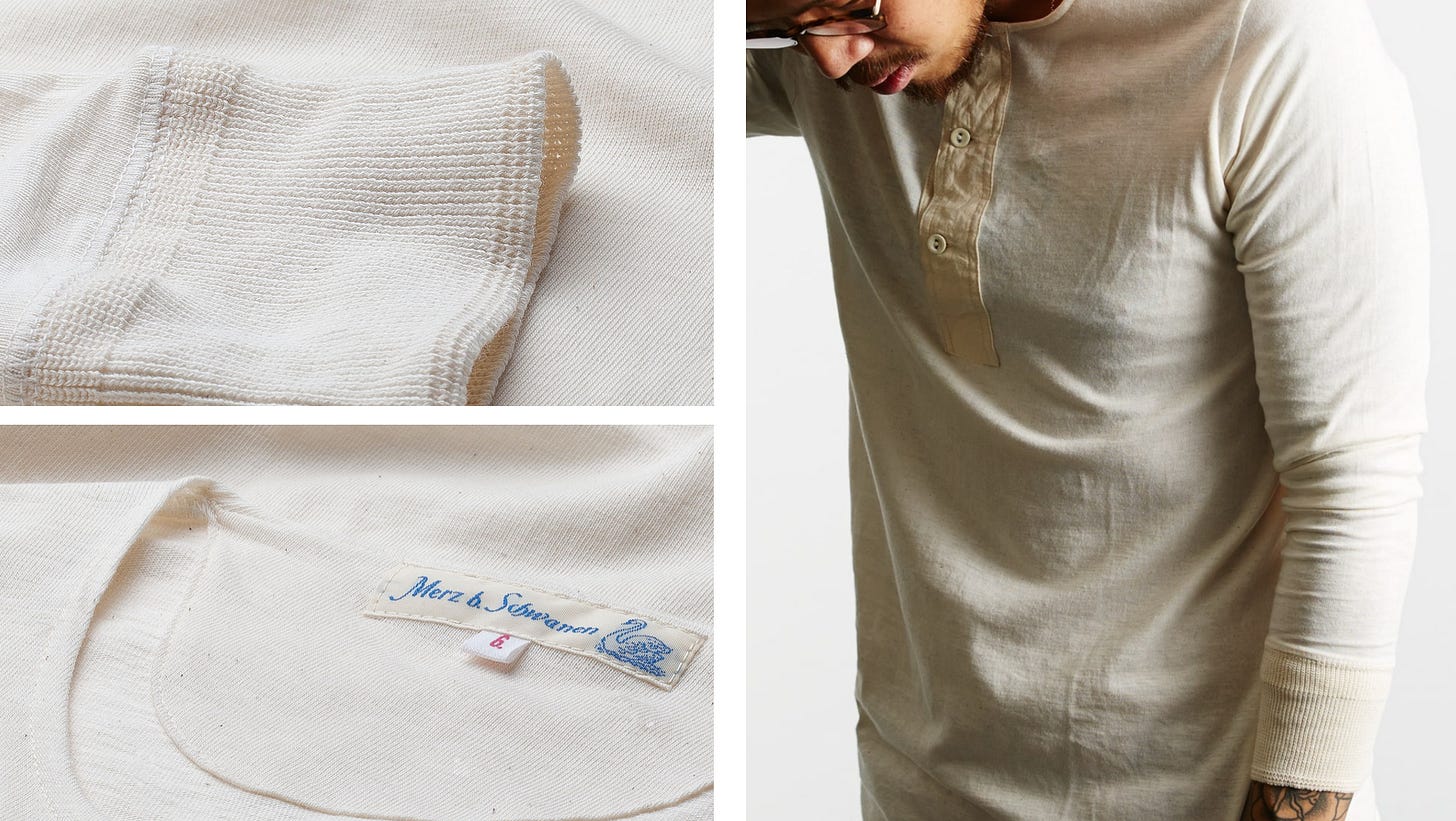Whenever I get asked why the clothes I curate are priced the way they are, I like to say, “Well, look at it this way: these clothes are as cheap now as they ever will be. In five years that shirt you want will be twice as expensive as it is today, but if you buy it today, it will last you the next ten years."
Fast fashion has dictated the value of clothing for most of us, and as a result, we’ve been conditioned to believe that what we wear should be a certain price and no more. But that price is built on a lie. They’re selling you cheap materials made by cheap (and often free) labor at cost-cutting practices that have huge environmental impacts, encouraging you to throw away and buy more because that’s the business model. Their prices are so low that they NEED you to keep coming back to buy more in order to keep the lights on.
Or, to use a metaphor my friends over at Goodwear USA like to use, buying cheap clothing can be like eating at McDonalds. The prices are low and the meals mostly unmemorable, but they know you’ll keep coming back for more. I’ll let Goodwear take it from here—
It’s 2pm, you haven’t eaten yet… you’re running on empty. Blood sugar dwindling, the golden arches appear before you. Five minutes and $8.00 later, you are eating a hot, generally good burger and fries. Without going down a rabbit hole of ethics, this meal, the McDonald’s product, fills a demand and gets the job done. And for that, it’s great.
It is not, however, a nice steak dinner. And it never will be, and that’s OK. McDonald’s is great because it’s McDonald’s. But what about when you want a date night, a celebration, or just to treat yourself? You simply can’t get… a full restaurant experience with service, hospitality, community, and great food… for eight bucks in five minutes. Everything is more expensive here from the wages of the cooks, to the cost of the ingredients, to the rent on the space. For that restaurant to stick around the next time you want a nice meal out, they need to charge you more…
Premium, well-made clothing brands are the steakhouses. Yes, you can absolutely go to Walmart and buy a shirt for $9.99. And sometimes, that makes sense too. But [slow fashion is] here for… when you want to treat yourself… to something truly special, and something to hold on to for a long time. How many of those cheap shirts are still around a few years later? Do they make you feel good when you put them on? How about the five minutes at McDonald’s? A year from now, will you remember the burger you had? How good it was? Probably not. But you will remember that steak dinner, that date, that experience.
Speaking of Goodwear, let’s dive right in to our newest fall arrivals and why I’ve decided to bring them you here at Fancy Groceries!
Goodwear USA heavyweight tees
What makes them so special? For starters, everything at Goodwear is grown & sewn in the USA - a lot of it in NC. They’ve been making this particular tee since 1988 and it stands out for its tubular knit, its 7.2oz 100% heavyweight cotton, and its 1.25 inch mock collar, which I absolutely love. No one else is making a tee quite like this. Also of note - the acid wash that gives it a legit marbled vintage vibe. This tee is designed to go the distance. I mean it. You’ll be buried in this thing if you so desire. It’s just that rugged. Even cooler, we’ve got these styles in for the guys and the gals this fall.
*note: black and acid wash blue are currently at the shop. Grey and Green will be here later this month
New flannels and corduroy button-downs from Portuguese Flannel
What’s so special about them? Within the textile industry “Made in Portugal” is a proud marker signifying excellent quality and production. In fact, Portugal has been renowned for their garment manufacturing for well over 100 years. Their climate coupled with their long staple cotton growing close to the Atlantic Ocean is supposedly one of the secrets to their success. (remember: long staple fibers are not prone to piling.) You have to touch these shirts to believe it. I’ve never felt any 100% cotton flannel shirt that feel this damn good.
I think the two vintage styles here - wide wale corduroy and an abstract check pattern - make both of these must haves this fall.
That tee from The Bear
It’s finally here. Merz B. Schwanen is behind one of the most in-demand white tees of the last 2 years since internet sleuths uncovered exactly what shirt Carmy was wearing throughout the Bear’s run.
What’s so special about it? The silky, weighted hand-feel, and construction details like the vintage neckline to the triangular insert beneath the armpit that keeps movement at a maximum. I’ve dug into the whole loopwheel process before but for those of you reading for the first time - Germany is one of three countries still operating 100 year old loopwheelers that are powered by hand and knit fabric in a circular fashion (this means no side seams on the shirt) using only gravity so tension is never applied to the fabric. Most of our clothes are stretched and pulled within an inch of their life during production - it’s why things stretch out. Modern day, automated tubular knit machines can crank out enough fabric for roughly 600 shirts a day. The ones Merz uses? They create enough fabric per day for about 20 shirts. Slow fashion at its finest. And slowest.
The 5.5oz loopwheel henley from Merz B. Schwanen
What’s so special about it? Merz designed this particular workwear style henley off an original flea market find from 1911! What’s incredible here is the processing of the neckline. The fine, thin hem is turned over twice by hand (you can tell from the photos that this is delicate work), which is exactly how the neckline of this type of shirt was originally sewn 100 years ago. Can you even imagine folding that curve over not once, but twice, and getting it perfect? Machines took over that job in the modern age, but Merz still does it by hand to honor the tradition of truly handmade clothing.
*Worth mentioning: their shirts run small because everything Merz makes is intentionally genderless and for all.
Portuguese Flannel 100% Virgin Wool Chore Jacket
What’s so special about it? Well, it’s my favorite thing in the store. Virgin wool is typically associated with a lamb’s first sheering. The hair fibers that sheep produce coarsen as they age, so the wool derived from lambs is considered one of the softer wools produced. Plus, it’s a naturally superior wool due to having longer fibers and a uniform quality throughout. The herringbone pattern on this jacket gives you permission to dress it up like you would a blazer, while the traditional chore coat cut lets you wear it like a casual jacket. And wool is self-cleaning + moisture wicking in the event you end up a sweaty, nervous mess on a hot date this holiday season.
The Naked & Famous Camel Slub 13oz Japanese Selvedge Denim
What’s so special about it: our always made in Canada pals put these jeans together using irregular sized slub yarns, giving them a distinctive weight and texture. We’ve chatted slub yarns before, but the quick recap is this - slub yarns are fat, skinny, dense, and thin all at once. As a result of these irregularities, fabrics develop a distinct fading pattern and vintage hand feel.
These camel slubs are going to start out sturdy and rigid, breaking in like a classic pair of raw denim. They’ll look fantastic throughout the fall and winter season. Easily paired with flannels and boots (like the picture below) or dressed up with an oxford and that Portuguese Flannel wool chore jacket above.
*note: this denim is currently in transit and should arrive in the next few days.
Okay, that is it for today! Hope to see you at the shop soon to try some of these items on! I rearranged the entire space over the last two days. It looks better than it ever has. And remember, anytime you’re in shopping, please grab yourself a coke or a beer out of the cooler (on the house) and tell me about anything cool you’ve seen lately.
Lastly, I’ve got THREE very cool things to announce in the next week or so. I’m not overselling it when I tell you that all three are dope AF. I think some of you already know what 1/3 announcements are, but I’ll share more in the next newsletter.
Until then.















